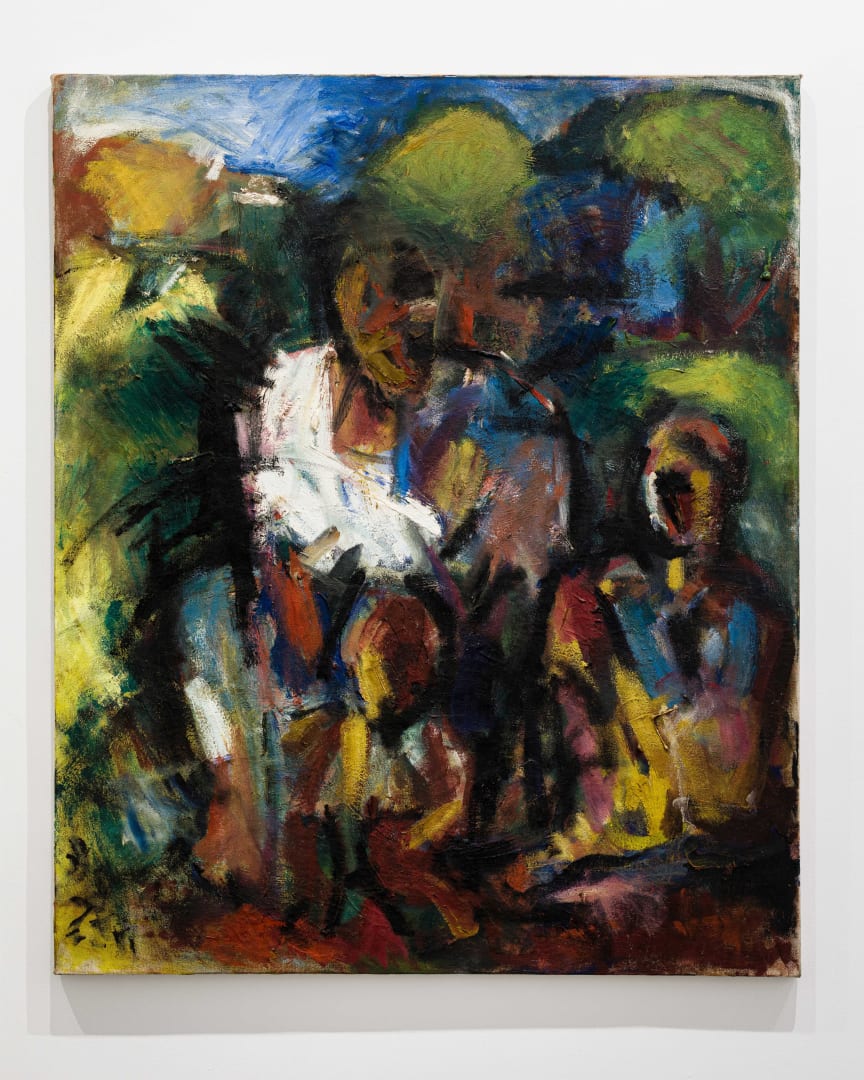Reba Hore's (b. 1926–d. 2008) practice is rooted in the dailyness that occupied her field of vision. Frenetic and at times even dizzying, her work was furious yet a strong humanist quality is evident, whether in the painted shadows of the humans in her images or the fragile catharsis of her subjects. The fervent lines of colours in the paintings and works on paper make form, figure and landscape indiscernible, underscoring a form of erasure. Hore’s is an expressionistic, powerful practice alluding to a confident embodiment of motion that reveals a gaze from the interiority of an entangled knot of experiences.
Reba Hore was educated at Calcutta University and Government College of Art & Craft in Kolkata. Hore completed her graduation in Economics and became an active member of the Communist Party in 1948. She lived and worked in Kolkata, New Delhi, and in Santiniketan. Actively involved in politics from a formative age, she took part in the tumultuous student movements in Kolkata in the 1950s and was deeply moved by the human misery she encountered during the Bengal Famine of 1943, an experience that continued to resonated in her practice. Her works reside in several private and public collections in India and abroad.
